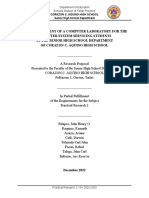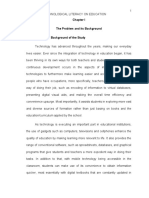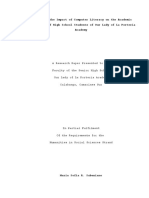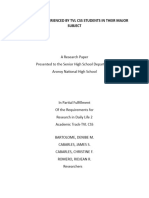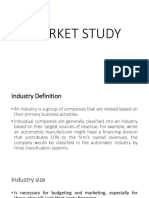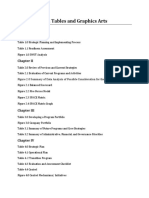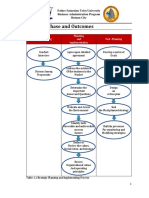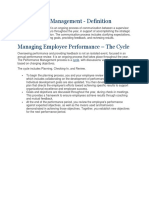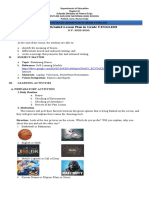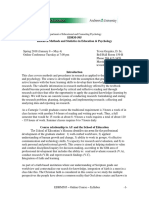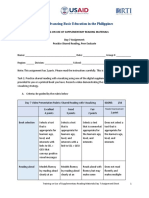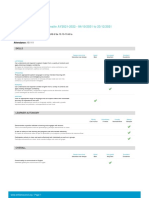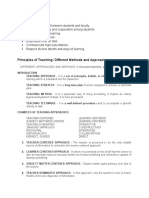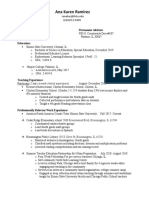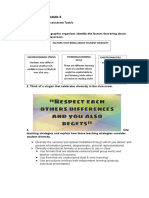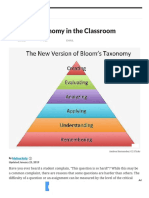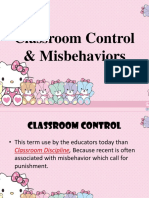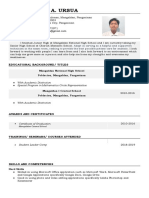50% found this document useful (2 votes)
10K views19 pagesResearch About Ict Chapter 1 and 2
This document discusses the influence of information communication technology (ICT) tools on teaching and learning among grade 11 students at Saint Joseph Institute of Technology Annex Campus. It notes that ICT is increasingly integrated into education and can support active, collaborative, and evaluative learning compared to traditional methods. However, some problems with technology in education are identified, such as over-reliance on the internet hindering critical thinking, technical issues disrupting work, and online distractions. The roles of teachers and students are changing with ICT integration in the classroom. The review of literature highlights benefits of technology in education like improved engagement, knowledge retention, individualized and collaborative learning, and development of 21st century skills.
Uploaded by
Francis Elaine FortunCopyright
© © All Rights Reserved
We take content rights seriously. If you suspect this is your content, claim it here.
Available Formats
Download as DOCX, PDF, TXT or read online on Scribd
50% found this document useful (2 votes)
10K views19 pagesResearch About Ict Chapter 1 and 2
This document discusses the influence of information communication technology (ICT) tools on teaching and learning among grade 11 students at Saint Joseph Institute of Technology Annex Campus. It notes that ICT is increasingly integrated into education and can support active, collaborative, and evaluative learning compared to traditional methods. However, some problems with technology in education are identified, such as over-reliance on the internet hindering critical thinking, technical issues disrupting work, and online distractions. The roles of teachers and students are changing with ICT integration in the classroom. The review of literature highlights benefits of technology in education like improved engagement, knowledge retention, individualized and collaborative learning, and development of 21st century skills.
Uploaded by
Francis Elaine FortunCopyright
© © All Rights Reserved
We take content rights seriously. If you suspect this is your content, claim it here.
Available Formats
Download as DOCX, PDF, TXT or read online on Scribd
/ 19

